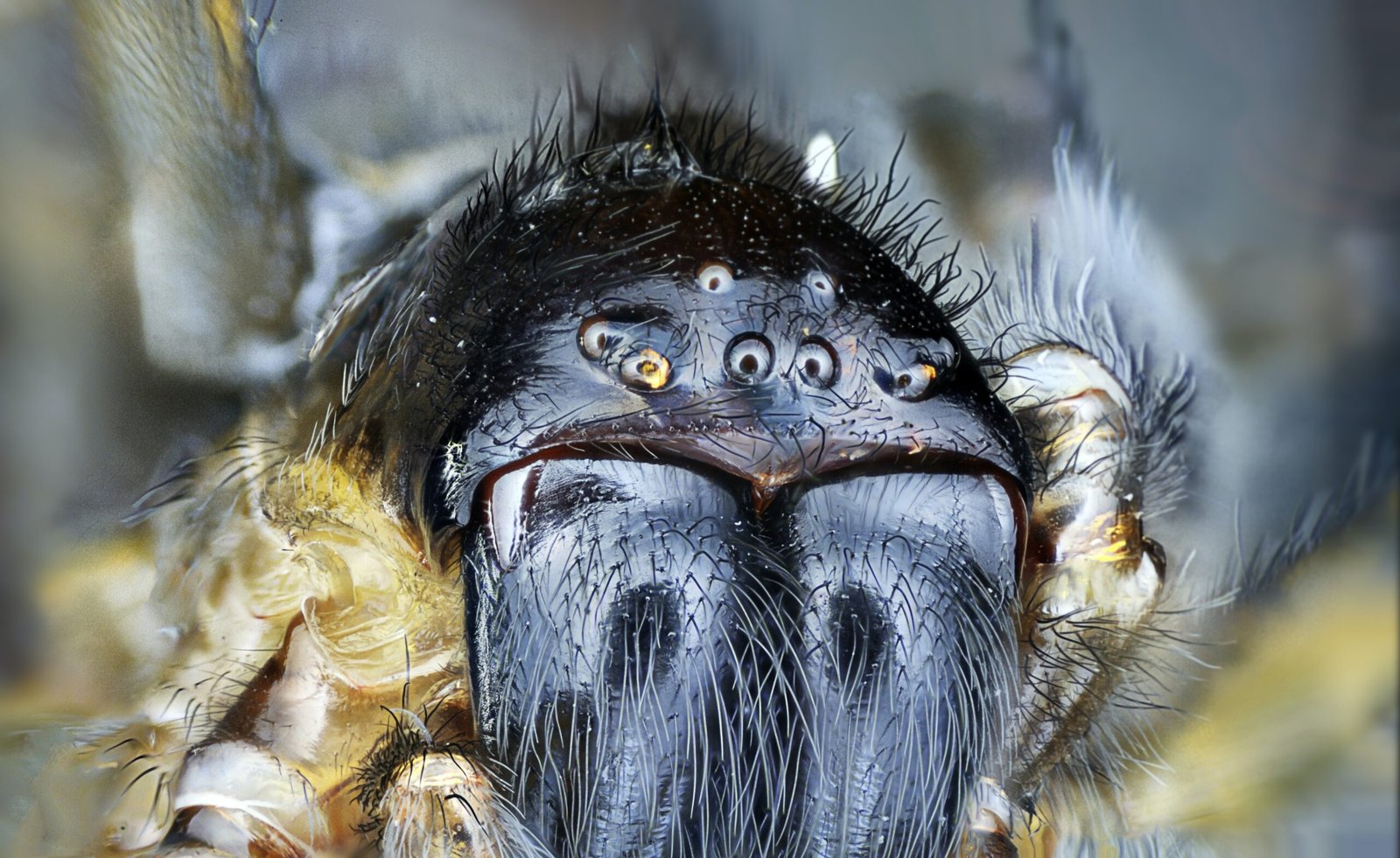Have you ever wondered how tarantulas manage to protect themselves from other spider species? It’s fascinating to discover the various ways in which these creatures defend themselves. From their intimidating size and hairy appearance to their venomous bites, tarantulas have developed impressive strategies to stay safe in their spider-eat-spider world. Let’s explore the intriguing world of tarantula defense mechanisms and uncover the secrets behind their survival tactics.

Physical Defenses
Tarantulas have several physical defenses that help protect them from threats posed by other spider species. One of their first lines of defense is their thick exoskeleton. This tough outer layer serves as a protective barrier, shielding the tarantula’s soft body from potential harm. Additionally, tarantulas possess spines and hairs on their bodies that act as a deterrent. These spines and hairs are often barbed and can cause irritation or injury to would-be attackers.
In addition to their exoskeleton and spines, tarantulas also have the ability to camouflage themselves. These spiders can change their coloration to blend in with their surroundings, making it difficult for predators or rival spiders to detect them. By blending into their environment, tarantulas increase their chances of remaining undetected and avoiding conflict altogether.
Venomous Fangs
Tarantulas are known for their venomous fangs, which they use primarily for subduing prey. However, these fangs also play a crucial role in defending themselves against threats from other spider species. Tarantula venom is often potent and can have varying effects depending on the species. While some tarantula venom may not be particularly harmful to other spiders, certain species possess venom that is highly toxic to potential predators or competitors.
Aggressive Behavior
When faced with a threat, tarantulas can exhibit various aggressive behaviors to fend off their adversaries. One such behavior is threat displays. Tarantulas may raise their front legs, extend their fangs, and hiss or emit warning noises to intimidate their opponents. These displays serve as a strong warning, indicating that the tarantula is ready to defend itself if necessary.
In extreme cases, tarantulas may resort to biting and chewing as a means of self-defense. Their venomous fangs can inflict painful bites and inject venom into their assailants, causing immediate or delayed effects. Additionally, tarantulas have a unique defense mechanism known as “urty hairs.” These hairs, which are found on their abdomen, can be flicked off and dispersed into the air. When these hairs come into contact with the eyes or sensitive areas of other spiders, they cause irritation and discomfort.
Size and Strength
Tarantulas are renowned for their impressive size and strength, both of which contribute to their defensive abilities. With larger body sizes compared to many other spider species, tarantulas have a more intimidating presence. The mere sight of a formidable tarantula can be enough to deter potential threats, as smaller opponents may think twice before engaging in a physical confrontation.
Moreover, tarantulas possess considerable muscular strength, enabling them to overpower and subdue adversaries. This strength can be crucial in defending against predators or rival spiders, giving tarantulas a significant advantage when it comes to ensuring their own safety.

Web-Building Abilities
While many spiders rely heavily on web-building as a means of defense, tarantulas have adapted to be less dependent on webs. Instead, they often prefer to retreat into burrows or natural crevices for protection. These retreats provide them with a secure hiding place, making it difficult for other spiders to access or attack them.
Territorial Behavior
Tarantulas are known to be territorial creatures, defending their space from potential intruders. They mark their territory through various means, such as depositing silk to establish boundaries or releasing chemical signals that serve as warnings to other spiders. This territorial behavior helps deter rival spiders, reducing the likelihood of conflicts and ensuring the tarantula’s safety within its designated area.

Co-Existence Strategies
In some cases, tarantulas may engage in interspecific associations, which involve co-existing with other spider species. These associations are often mutually beneficial, where both spiders derive advantages from their interactions. By forming these associations, tarantulas may be less likely to encounter conflicts with other spiders and can benefit from shared resources or protection.
However, when it comes to potential threats from other spider species, tarantulas also employ avoidance behavior. They may actively steer clear of areas or situations where encounters with hostile spiders are more likely. This avoidance behavior helps minimize the risks of confrontation and ensures the tarantula’s safety.
Antipredator Adaptations
Tarantulas have developed various antipredator adaptations to ward off potential threats. One such adaptation is acoustic communication. By producing specific sounds or vibrations, tarantulas can communicate with other individuals or warn predators of their presence. This form of communication can deter predators and reduce the likelihood of an attack.
Additionally, tarantulas have mastered the art of defensive mimicry. Some species have evolved to resemble venomous or harmful creatures, such as scorpions or ants, tricking predators into believing that they are not suitable prey. This deceptive mimicry provides tarantulas with a survival advantage, as predators may avoid them due to the risk they appear to pose.

Environmental Adaptations
Tarantulas have adapted to their specific habitats as a means of defense. Habitat selection is key, as tarantulas often choose environments that offer natural protection, such as dense foliage or rocky areas. By residing in these habitats, tarantulas can benefit from natural cover, making it harder for potential threats to locate or approach them.
Many tarantulas are also nocturnal, meaning they are active primarily during the night. This behavior further aids in their defense, as it reduces the chances of encountering diurnal predators or rival spiders. By operating under the cover of darkness, tarantulas can minimize their exposure to potential threats.
Lastly, burrowing is another environmental adaptation utilized by tarantulas for defense. Many tarantula species create complex burrow systems that serve as both their dwelling and a refuge from danger. These burrows provide a safe and secure space for tarantulas to retreat to when they sense threats, effectively keeping them out of harm’s way.
Predatory Behavior
While tarantulas primarily rely on their defense mechanisms, they are also formidable predators themselves. Feeding on other spiders is a common predatory behavior exhibited by many tarantula species. By preying on smaller, more vulnerable spiders, tarantulas reduce competition for resources and eliminate potential threats.
Furthermore, tarantulas are skilled at ambush hunting. They patiently wait in concealed positions, blending seamlessly into their surroundings, and strike swiftly when their prey ventures within reach. This ambush hunting strategy allows tarantulas to secure their meals while minimizing their own risks of encountering predators or rival spiders.
In conclusion, tarantulas employ a combination of physical defenses, venomous fangs, aggressive behavior, size and strength, web-building abilities, territorial behavior, co-existence strategies, antipredator adaptations, environmental adaptations, and predatory behavior to defend themselves against threats from other spider species. Through these diverse mechanisms, tarantulas have perfected the art of self-preservation in their complex and competitive spider world.

